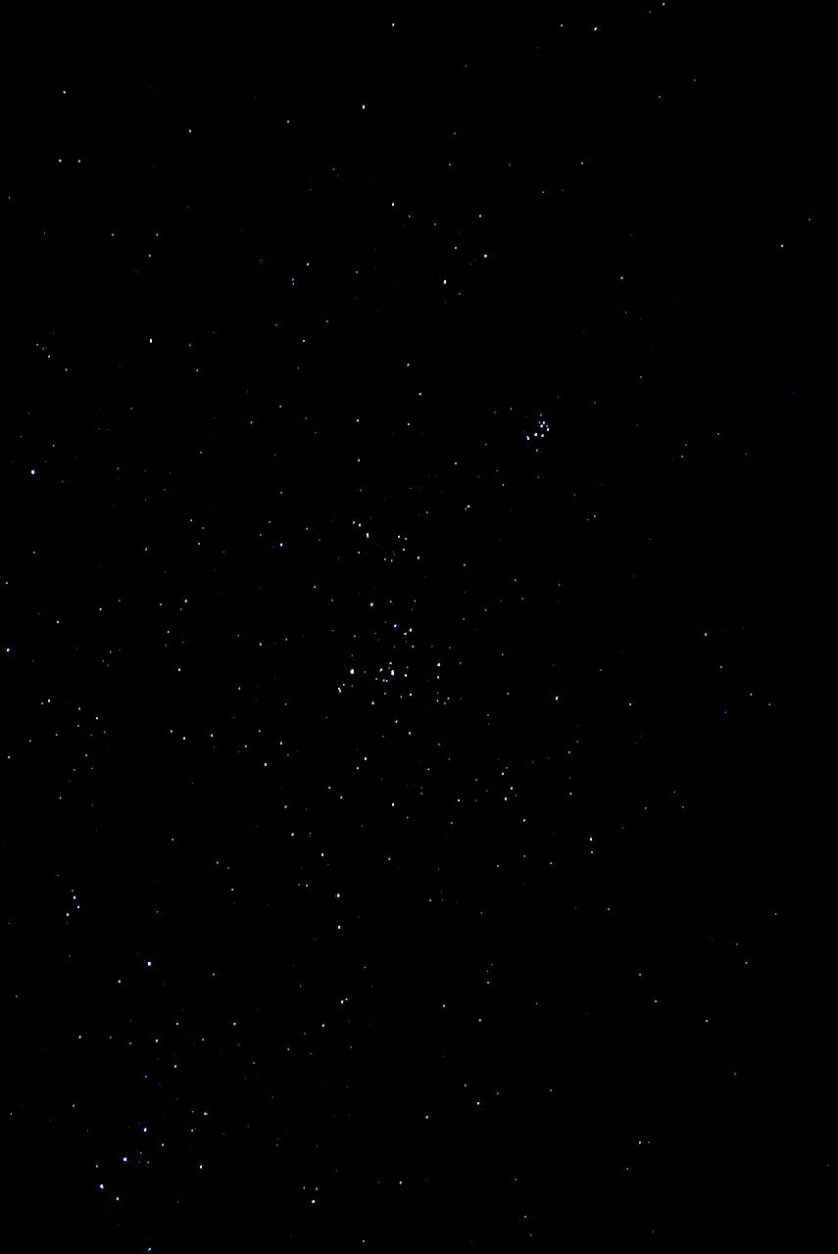
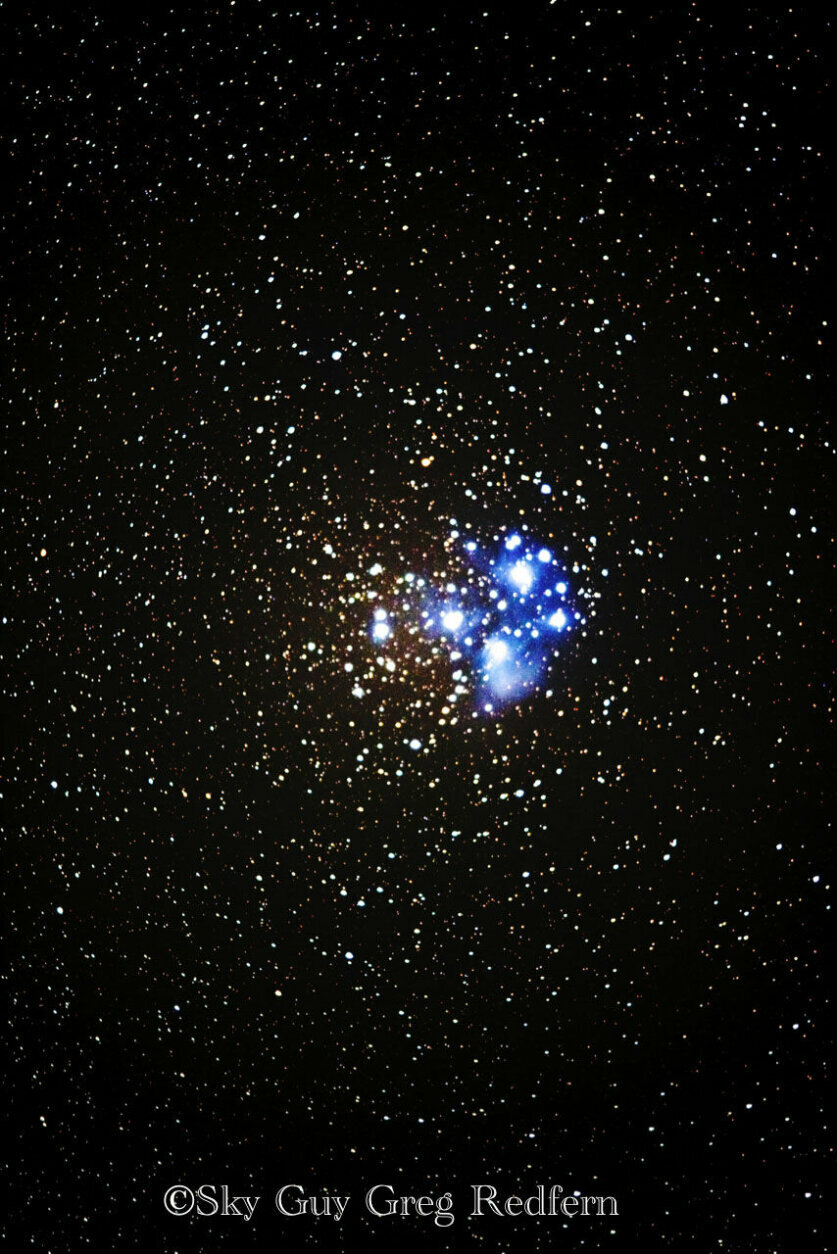
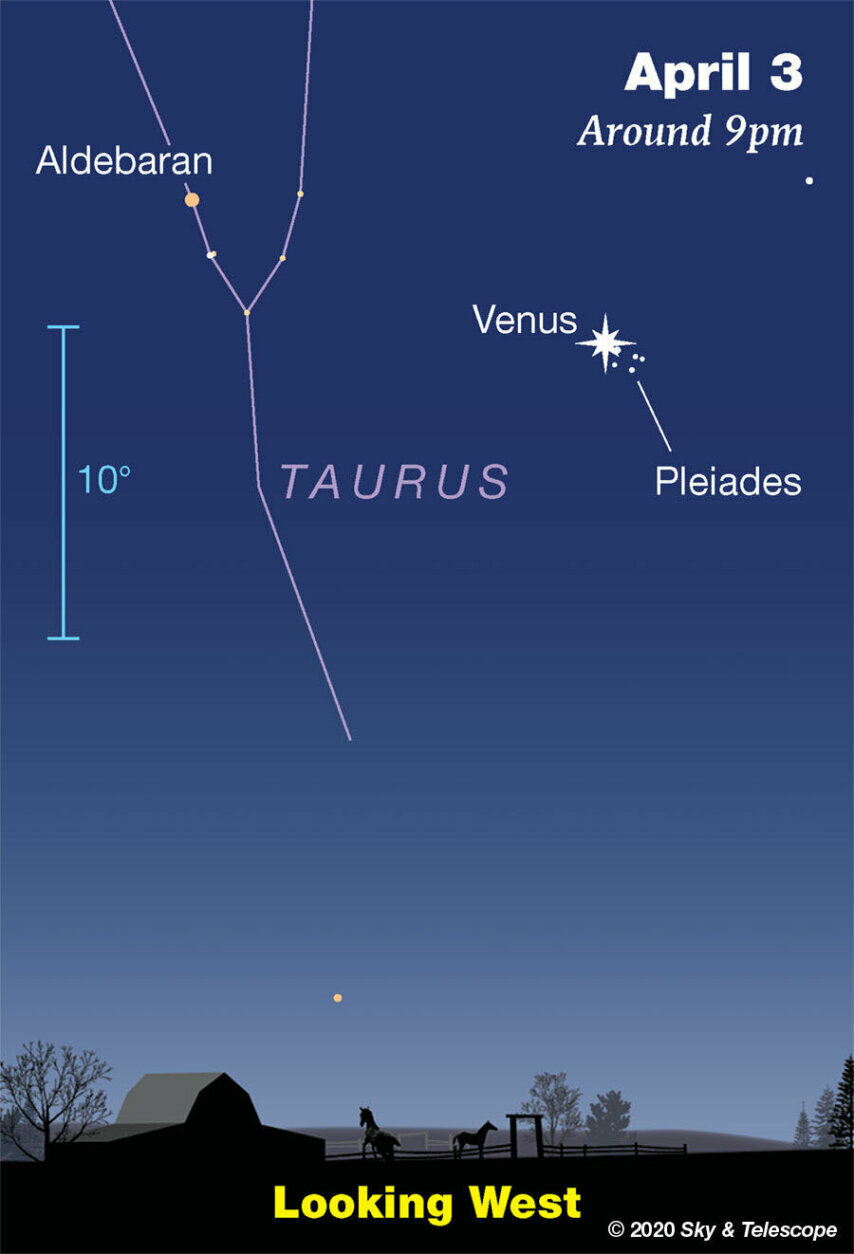

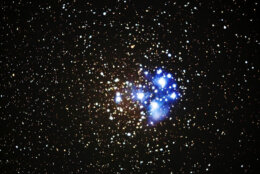
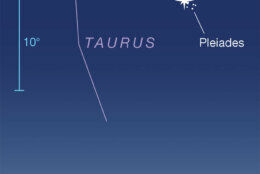
OK, DMV, here is a sky sight you do not want to miss.
This week we can see a spectacular sky show in the western skies unfold night by night as the brilliant planet Venus closes in on a famous and beautiful star cluster.
Tonight after sunset look to the West and find brilliant Venus. Just above the planet is a small cluster of stars called the Pleiades or Seven Sisters. Located in Taurus the Bull, this little cluster is easy to see.
The star cluster is mentioned in the Iliad, the Odyssey and the Bible. It is the logo for the Japanese automaker Subaru, as well. It is prominent in other religions and cultures throughout antiquity.
The Pleiades is a very young star cluster that contains hundreds of stars. They were born in a huge nebula of gas and dust millions of years ago. Long-exposure photographs show some of the stars still enveloped in their cosmic womb.
Venus will be moving closer to the Pleiades each night this week and will actually be in the cluster on April 3.
Although this will be visible to the unaided eye, a pair of binoculars will really enhance the view, as will any telescope.
Be sure to enjoy this sky sight as you watch Venus move against the background stars due to its planetary motion as well as that of our planet.
Try taking a pic with any camera as these two celestial objects are very bright and will show up in any camera, including smartphones. Take a pic, see the results and adjust as necessary.
By the way, the light from Venus took about 5 1/2 minutes to reach your eyes while the light from the Pleiades left 430 years ago in the year 1590 AD.
Get outside of your home — while practicing social distancing — and enjoy this celestial treat!
Follow my daily blog to keep up with the latest news in astronomy and space exploration. You can email me at skyguyinva@gmail.com.







